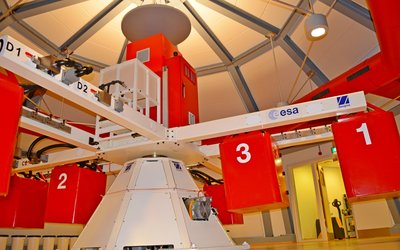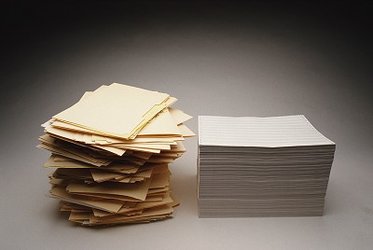Spin Your Thesis! 2014 campaign completed
New insights into biology and glaciology have been obtained thanks to ESA’s Spin Your Thesis! programme. For two weeks in September, four student teams used the Large Diameter Centrifuge (LDC) facility at ESA’s European Space Research and Technology Centre (ESTEC), the Netherlands. Now the data has been collected, the analysis can truly begin.
The LDC allows experiments to be run under hypergravity conditions of between 1 and 20 times Earth’s gravity. Each team was allocated 2.5 days of time on the centrifuge and could use the Life and Physical Sciences Instrumentation, and Life Support (LIS) laboratory to work with their samples before and after the experiment.
The first to arrive was team AngioGravity from University of Porto and MIT Portugal Program (Portugal). Their investigation was into the formation of new blood vessels. This could help assist the healing process in wounds, and give new insights into the treatment of diseases where vascularization plays a role such as heart attacks. The results may also be useful in tissue engineering, which aims to grow adequate tissue or even whole organs to restore damaged or lost function.
The team thawed and prepared their cell samples one week in advance. On Monday morning, they were ready. The cells were placed at 37°C and 5% CO2 in an incubator integrated into the centrifuge . Between Monday and Wednesday, cell samples were spun for 4 and 16 hours, at gravity levels of 3g and 10g. The tube-like structures created were analysed with a microscope and fixed for post analysis.

In the same week, Sponges in Space from the University of Amsterdam (the Netherlands) arrived to make their preparations. Their experiment studied the energy demands of sponges during the stage of germination in which they are setting up their needles, called spicules. The results could improve ways of culturing sponges and their use in biotechnological purposes.
Five days after the team had plated sponge gemmules, the sponges had reached the phase where they were sprouting spicules. The students took pictures to compare with similar images that would be taken after the experiment. They would allow them to determine the survival rate, surface area and volume of the sponges. They also fitted cameras to microscopes inside the experiment to make a time lapse of the sponges.
Then the cells were centrifuged at the gravity levels of 2.5, 5, 10 and 20 g for 48 hours. There were clear differences in the sponges that had experienced different gravities. It seemed that the sponges survived 20g surprisingly well.

The third team was Transformers from the Italian Institute of Technology (Italy). They studied hypergravity to see if it would increase the efficiency of gene delivery in skeletal muscle cells.
On Monday of the second week, the team spun sample cells for 2 hours at 10g and at 20g, and repeated the experiment until Wednesday afternoon. After each run, the cells were kept for 46 hours in an incubator under fast growing conditions. Then they were transported back to Italy for analysis.

The last team, Glacier, came from the University of Amsterdam (the Netherlands). As the name suggests, they were studying the influence of gravity on glacier flow dynamics. Their work was design to learn more about the landscape of Mars, where large parts of the surface have been deformed by glacier ice flows.
They created an ice analogue material and let it flow through tubes at hypergravity levels of 2g, 3g, and 5g. They had varied the slope angle of the tube, the surface roughness of the tube, the material thickness, and the effect of obstructions to the glacier ice flows.
Coloured foam balls on top of the ice analogue material provided markers for a time lapse movie. One surprising result they obtained is that the ice analogue material flowed faster over a rough surface than over a slippery surface at small slope angles. This will now be investigated further.
Spin Your Thesis! will continue in 2015. The call for proposals programme is open now for application until 7 December 2014.
Contact for further information:
Natacha Callens, spinyourthesis @ esa.int







